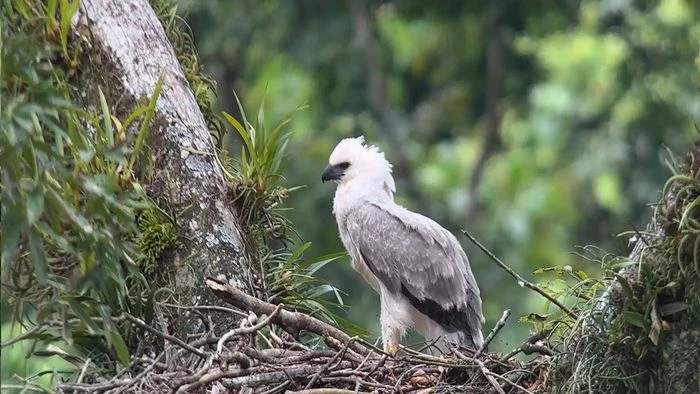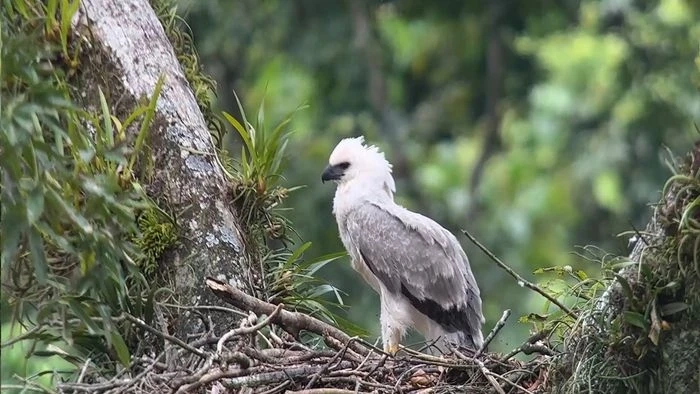Well, hello there, Dear readers! Today, let's talk about birds; the tiny creatures chasing the wind in the sky. Just picture seeing a bird thousands of miles from where it normally lives—a breathtaking, surprising sighting for any birder. These Vagrant Birds excite birdwatchers around the world, but what if their unexpected appearances are a sign of something bigger? Unforeseen storms, floods, and heatwaves are reshaping landscapes and driving rare birds into alien surroundings. And while such sightings excite us, they raise truly critical questions about what has been happening in our skies.
We’re still wondering—how are these vagrant birds being thrown off course? Let’s discuss deeply about them in this blog.

What Are Vagrant Birds?
Vagrant birds are species that appear far outside their expected range. These surprising travelers might show up due to navigational errors, lack of food, or strong winds. For birders, they are exciting discoveries, but their presence often indicates that something abnormal is happening in the natural world. Many of these events are influenced by external factors like extreme weather, habitat destruction, or climate anomalies.
Weather as a Steering Force
Storms don’t just batter coastlines—they alter flight paths. Hurricanes, in particular, are notorious for displacing birds during migration. When storms surge across oceans or along migration corridors, they act like airborne highways gone haywire, pushing species hundreds of miles from where they should be. These misdirected flights frequently lead to fascinating but tragic appearances.
In places like Harshaw Road, which winds through key birding regions, birders have reported increasing numbers of unseasonal sightings after heavy rains or droughts. It’s not a coincidence, it’s climate forcing its hand.
Case Study: The Rarest Bird in Texas
A perfect example of weather-driven displacement happened in South Texas. The Rarest Bird in Texas, the Amazon Kingfisher, was seen far north of its normal range shortly after a record-setting storm season. While the sight thrilled many, experts noted the bird likely arrived off-course, exhausted and far from its habitat. These misplacements often lead to poor survival outcomes, especially for isolated individuals without food or social contact.
This kind of story repeats every year, more frequently than ever. It's part beauty, part heartbreak.
Unusual Guests, Unusual Risks
Vagrant birds don’t just get lost—they disrupt local bird ecosystems, too. When a rare species lands in unfamiliar territory, it can compete for food, confuse mating signals, or even bring diseases. For example, moth populations can shift in reaction to new bird species feeding in their area. Birders have even noted declines in some Common Texas Moths, linking their absence to increased bird activity from displaced travelers.
The food chain, after all, isn’t built to adapt overnight.
What Birders Can Learn From Patterns?
Birders who track these changes often become accidental scientists. Logging sightings helps build a picture of what’s changing. Platforms like BIRDERS on the ROAD tap into this curiosity, combining on-the-ground insights with expert video storytelling. Thanks to these videos, viewers can learn not just about birds, but about the environmental forces that shape their paths.
Whether it’s a casual sighting near the Lower Rio Grande Valley or an alert from a seasoned guide in Southeast Asia, birders now share knowledge in real time. This has led to faster identification of migration shifts, which can eventually inform conservation work.
Climate Change and Long-Term Consequences
While one strange sighting may seem like a fluke, multiple disoriented birds tell a larger story. Extreme weather—driven by global climate shifts—is altering wind patterns, food supplies, and breeding conditions. Migratory species have to follow less predictable routes, with greater barriers in their path.
Some species do adapt. Others vanish from familiar routes altogether. Eventually, more birds might never reach classic hotspots, altering not only tourism but also ecosystems.
Watching From Home, Helping From Afar
The beauty of today’s tech-savvy world is that birdwatchers can help without hopping on a plane. With platforms like BIRDERS on the ROAD, fans can witness rare sightings, learn about new species, and track changes in real time—all from their living room.
Many guides and videographers affected by seasonal downturns now find new purpose filming these moments. As the weather throws birds off their expected paths, the cameras are ready. Every recording becomes both a celebration and a data point.
Conclusion: Chasing the Wind, Not Just the Birds
We chase birds, but often they are chasing safety. As extreme weather pushes more species off their maps, we must ask: Are we witnessing wonders, or warnings?
Curious and concerned birders know the answer may be both. Watching vagrant birds brings joy, yes—but also a sense of urgency. Their surprise appearances tell us that skies are shifting, winds are changing, and nature is trying to adapt.
For those who can’t travel, the magic lives on through online storytelling with BIRDERS on the ROAD.


